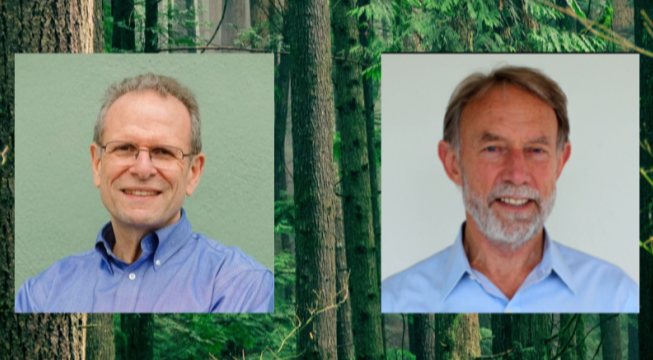Climate Restoration: A Conversation with Peter Fiekowsky
 The following conversation was part of the Resilience and Possibility series. To access the recording, please scroll to the bottom of this post.
The following conversation was part of the Resilience and Possibility series. To access the recording, please scroll to the bottom of this post.
On June 1, Peter Fiekowsky joined the global Pachamama Alliance community to share his work on climate restoration.
His recently published book, Climate Restoration: The Only Future That Will Sustain the Human Race, outlines a goal beyond mitigation or slowing down the climate crisis. As Peter made the case for, addressing the climate crisis will require a much more ambitious goal—one that focuses on restoring the climate. As daunting as that sounds, Peter argues that it’s achievable and the technologies for doing so already exist.
Climate Restoration: Going Beyond Net Zero Emissions
The dominant approach to addressing the climate crisis has largely been around reducing greenhouse gas emissions to net zero.
But Peter doesn’t think that this will leave behind a livable planet for future generations. As he explained, even if we reduce emissions to net zero, carbon dioxide levels would be around 460 parts per million (ppm)—a dangerous amount for humans and many other species. Instead of solely focusing on reducing emissions, Peter believes we should be aiming for a much more audacious goal: climate restoration.
That’s not to say that climate restoration precludes or minimizes the importance of reducing emissions. Rather, Peter made it clear that his work complements efforts to reduce emissions and that both are needed to address the climate crisis.
4 Ways to Restore the Climate by 2050
According to Peter, restoring the climate will require reaching pre-industrial levels of carbon dioxide—which were below 300ppm—by 2050.
In order to reach this goal, a trillion tons of excess carbon will have to be removed from the atmosphere. Peter shared four methods—all of which already exist—for doing so in the next few decades. They include ocean fertilization, limestone production, seaweed permaculture, and methane oxidation.
These methods are examples of geoengineering, the use of technology to alter the environment, and/or biomimicry—the implementation of strategies and processes that mimic those found in nature.
1. Ocean Fertilization
Ocean fertilization is the process of stimulating photosynthesis and phytoplankton multiplication, which would then in turn capture large amounts of carbon dioxide.
This is done through the mimicking of natural processes such as iron-rich dust storms. Peter acknowledged that there may be unintended consequences of this method. For instance, the resulting increase in phytoplankton and algae may lead to less nutrients and oxygen available for certain species. However, Peter also pointed out that ocean fertilization would help many marine species to thrive. As he explained, this is what had happened ten years ago when scientists tested ocean fertilization and saw a significant increase in whale births as a result.
2. Synthetic Limestone Production
According to Peter, limestone develops in nature over long periods of time and is an effective way to store carbon given that 99% of Earth’s carbon is under the ocean in the form of limestone.
By synthetically producing limestone, we can mimic this natural process of carbon capture. At the same time, the synthetic limestone can serve a secondary purpose and be used as concrete or to build roads.
3. Seaweed Permaculture
Seaweed permaculture is another method of carbon capture that is highly effective.
It involves creating kelp “forests” in oceans that capture huge amounts of atmospheric carbon. Seaweed permaculture is extremely promising because as Peter pointed out, seaweed grows rapidly and can be used to create an array of consumer products such as toothpaste.
Methods like seaweed permaculture and synthetic limestone production that create useful byproducts may be easier to implement because these byproducts can be sold for consumer goods which can then finance the implementation.
4. Methane Oxidation
Although the first three methods focus on capturing carbon, the fourth method that Peter shared focuses on methane instead.
As Peter explained, methane is 100 times stronger than carbon dioxide in its greenhouse effect and contributes to a third of all global warming. He went on to illustrate just how important it is to remove methane from the atmosphere, warning that dangerous levels of global warming can occur from methane bursts that follow the loss of polar ice caps.
In Peter’s book, he describes the process of removing methane through methane oxidation. This involves adding iron chloride molecules, which form naturally over the ocean, to existing iron chloride molecules. As a result, the ocean air becomes a “sponge” for methane.
The Possibility of Restoring the Climate by 2050
Peter is not just hopeful that we can restore the climate by 2050, he’s confident that it will happen.
He encourages people everywhere to share this message with others, particularly younger people who may be feeling hopeless. As he put it, doing so is like making a promise to future generations, one that can motivate people to quickly get into action in order to make it a reality.
Beyond spreading this message of possibility, Peter invited participants to get actively involved in the movement for climate restoration.
“Even if you don’t think that these methods will work, create your own—put yourself on the line. There’s no better life than living into that commitment to restore the climate.”